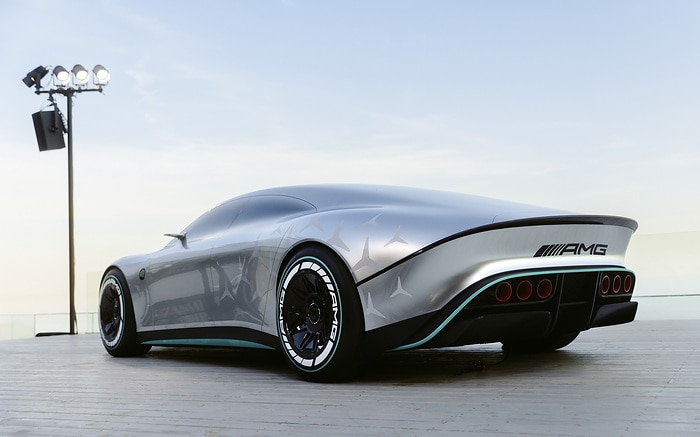Mercedes Revolutionizes EV Braking With Innovative In-Drive System
Giancarlo Perlas November 28, 2024- Mercedes-Benz is pioneering a new EV technology that embeds the braking system directly into the car’s electric drive unit.

Mercedes-Benz’s innovative electric vehicle (EV) braking system could unlock significant advantages over conventional builds. It would potentially allow the three-pointed star marque to improve its electric cars’ performance, reliability, and longevity. The luxury car maker could attain these while staying true to its ESG commitments and sustainability targets.
A Maintenance-Free EV Braking System
According to InsideEVs, Mercedes’ upcoming in-drive braking system will be housed within the drive unit itself. Its unorthodox approach is unlike the typical outboard brakes manufacturers equip on most cars or even the inboard brakes some of them use.
The design offers several key benefits, including eliminating the need for regular brake servicing throughout the car’s lifetime. In addition, the system captures all brake dust, preventing it from dispersing into the environment. This is a notable feature, given the increasing pressure imposed by Euro 7 standards in Europe and other regulators from key markets for automakers to reduce their particulate emissions.
Mercedes effectively enhances environmental sustainability by integrating the brakes into the electric drive unit while ensuring a “virtually maintenance-free” user experience. The technology also resolves concerns like brake fade, thanks to a water-cooled stationary disc that sustains consistent performance even during heavy use.
A Redesign of EV Braking Dynamics
Unlike traditional setups involving spinning discs and calipers, Mercedes’ upcoming in-drive brakes employ a stationary disc paired with a circular brake pad that rotates alongside the motor. The circular pad presses against the stationary disc to scrub speed when braking.
Mercedes aims to make the mechanism last over the car’s entire life. All brake dust would be contained within an internal compartment that doesn’t require manual emptying.
The integration of a stationary water-cooled disc eliminates rust buildup, which is an issue often observed in vehicles left idle for extended periods. Moreover, the absence of calipers reduces unsprung weight, which is critical for improving vehicle handling and ride quality.
Meeting Regulatory and Consumer Expectations
The Euro 7 standards scheduled for 2026 aim to address non-tailpipe emissions like tire and brake particulates. By preventing brake dust from entering the environment, the technology positions itself as a forward-thinking solution to upcoming regulatory demands.
The system also addresses consumer demand in unexpected ways. One of the key issues it could solve is the rust buildup in brake discs, which is a common sight after a car sits idle for an extended period. This new design eliminates such concerns while providing quieter braking performance and enabling designers to create more aerodynamic and visually appealing wheels.
Advancing EV Design and Performance
In addition to its environmental and maintenance benefits, the in-drive system allows for fully enclosed aerodynamic wheels, reducing drag and enhancing vehicle efficiency. These developments mark a leap forward in electric vehicle design, merging aesthetics with performance.
Mercedes is still testing the technology. So far, the company has yet to arrive at a production timeline for the revolutionary system. Nonetheless, the luxury automaker’s innovative approach could set a new benchmark in EV braking systems and in addressing environmental challenges in the automotive landscape. All these while offering practical advantages for drivers.




